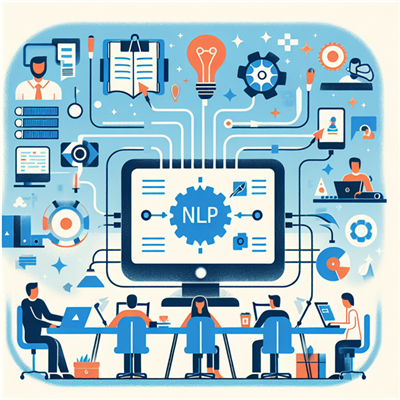
In today’s technology-driven world, algorithms play a crucial role in programming, data processing, and system design. They are the backbone of computer science and software development, enabling efficient problem-solving and decision-making. Whether you are an aspiring software engineer, a data scientist, or a tech enthusiast, understanding algorithms is essential. This blog provides an overview of the core concepts and techniques typically covered in an algorithm course, equipping you with the knowledge needed to tackle complex challenges in your career.
What is an Algorithm?
An algorithm is a step-by-step procedure for solving a problem or accomplishing a task. It is a finite sequence of well-defined instructions that takes an input, processes it, and produces an output. Algorithms are not restricted to programming; they are fundamental to various fields, including mathematics, artificial intelligence, and data analysis.
Importance of Learning Algorithms
Learning algorithms equips individuals with essential problem-solving skills. Algorithms help in:
- Optimizing Processes: Understanding algorithms enables programmers to write efficient code that saves time and resources.
- Improving Performance: Knowledge of algorithms allows developers to select the most suitable algorithms for specific tasks, enhancing application performance.
- Solving Complex Problems: Algorithms provide systematic approaches to tackle complex challenges, making them invaluable in fields such as machine learning and data science.
Core Concepts Covered in an Algorithm Course
1. Data Structures
One of the foundational concepts in an algorithm course is the study of data structures. Data structures are ways of organizing and storing data to enable efficient access and modification.
- Types of Data Structures: You will learn about various data structures, including arrays, linked lists, stacks, queues, trees, and graphs. Each data structure has its unique characteristics, advantages, and use cases.
- Choosing the Right Data Structure: Understanding when to use specific data structures based on the problem at hand is critical for developing efficient algorithms.
2. Sorting Algorithms
Sorting algorithms are fundamental techniques used to arrange data in a specific order, making it easier to search and manipulate.
- Common Sorting Algorithms: You will explore popular sorting algorithms such as Bubble Sort, Quick Sort, Merge Sort, and Heap Sort. Each algorithm has different time and space complexities, making them suitable for various scenarios.
- Complexity Analysis: Understanding the performance of sorting algorithms in terms of time and space complexity is crucial. You will learn about Big O notation, which provides a mathematical way to express the efficiency of algorithms.
3. Searching Algorithms
Searching algorithms are designed to retrieve information stored within data structures. Efficient searching is essential for applications dealing with large datasets.
- Linear Search vs. Binary Search: You will learn the difference between linear search (which checks each element sequentially) and binary search (which divides the data set in half to locate a target value). Binary search is much faster but requires sorted data.
- Complexity of Searching: Just like sorting, you will analyze the efficiency of searching algorithms using Big O notation.
4. Recursion
Recursion is a powerful programming technique where a function calls itself to solve a problem. Understanding recursion is vital for grasping more advanced algorithmic concepts.
- Base Case and Recursive Case: You will learn how to define base cases to terminate recursive calls and how to break problems into smaller subproblems.
- Applications of Recursion: Common applications include solving mathematical problems (like factorial calculation), traversing data structures (like trees), and implementing backtracking algorithms.
5. Dynamic Programming
Dynamic programming is an advanced algorithmic technique that solves complex problems by breaking them down into simpler overlapping subproblems.
- Memoization: You will learn how to store the results of expensive function calls and reuse them when the same inputs occur again.
- Tabulation: This technique involves solving subproblems in a bottom-up approach, building up solutions incrementally.
- Applications: Dynamic programming is widely used in optimization problems, such as the Knapsack problem, Fibonacci sequence, and more.
6. Greedy Algorithms
Greedy algorithms are another important concept in algorithm courses, focusing on making the best local choice at each step with the hope of finding a global optimum.
- Characteristics of Greedy Algorithms: You will learn how to identify problems suitable for greedy solutions, such as Huffman coding and activity selection.
- Comparing with Other Approaches: Understanding when to use greedy algorithms versus dynamic programming or other strategies is crucial for effective problem-solving.
7. Graph Algorithms
Graphs are versatile data structures used to represent relationships and networks. Understanding graph algorithms is vital in fields such as social network analysis, transportation, and web page ranking.
- Graph Representation: You will learn how to represent graphs using adjacency matrices and adjacency lists.
- Common Graph Algorithms: Key algorithms include Depth-First Search (DFS), Breadth-First Search (BFS), Dijkstra’s algorithm (for shortest paths), and Prim's/Kruskal's algorithm (for minimum spanning trees).
- Applications: Graph algorithms have real-world applications in routing, recommendation systems, and network analysis.
8. Algorithm Design Techniques
An essential component of any algorithm course is the study of various algorithm design techniques, which help in creating efficient algorithms.
- Divide and Conquer: This technique involves breaking a problem into smaller subproblems, solving them independently, and combining the results.
- Backtracking: Backtracking is a systematic method for exploring all potential solutions to a problem, often used in constraint satisfaction problems like puzzles and combinatorial problems.
- Brute Force: Although often inefficient, understanding brute force solutions provides a foundation for developing more optimal algorithms.
9. Complexity Analysis
Understanding algorithm complexity is crucial for evaluating the efficiency of your solutions.
- Time Complexity: You will learn how to analyze how the runtime of an algorithm grows with the size of the input, helping you compare different algorithms' performance.
- Space Complexity: Analyzing the amount of memory required by an algorithm is equally important. You will learn to consider both time and space when evaluating algorithms.
10. Practical Applications and Real-World Examples
Finally, algorithm courses often include practical applications and real-world case studies to demonstrate how algorithms solve complex problems.
- Hands-On Projects: Many courses feature hands-on projects that allow students to implement algorithms and see their impact on actual problems.
- Industry-Relevant Examples: Learning through industry examples helps students understand how theoretical concepts apply in practice, such as in machine learning, software development, and data analysis.
Conclusion
An algorithm course is a gateway to mastering the essential skills needed in today’s technology-driven landscape. By understanding the fundamentals of algorithms, including data structures, sorting, searching, recursion, dynamic programming, and graph algorithms, you equip yourself with the tools necessary to tackle complex challenges in software development and data analysis.
The knowledge gained from an algorithm course not only enhances your programming skills but also fosters a logical and analytical mindset essential for success in any technical field. As you embark on your journey to learn algorithms, remember that practice is key. Implementing the concepts learned in real-world scenarios will solidify your understanding and prepare you for the exciting challenges that lie ahead in your career.
In conclusion, learning about algorithms and data structures is a smart move for anyone looking to advance their career in IT. Whether you're a student, a working professional, or a coding enthusiast, an algorithm training course can equip you with the skills you need to succeed in the digital world.







COMMENT